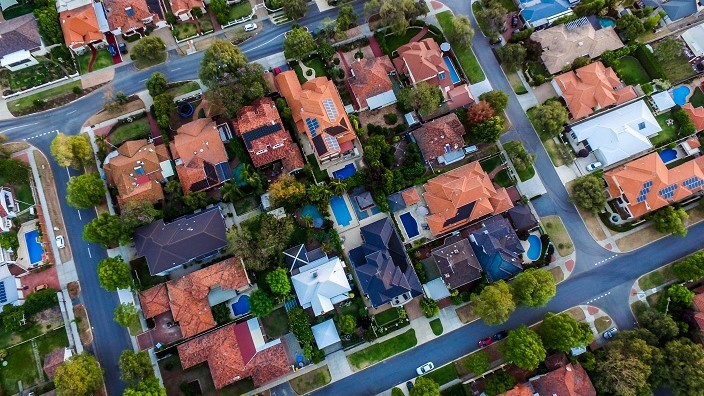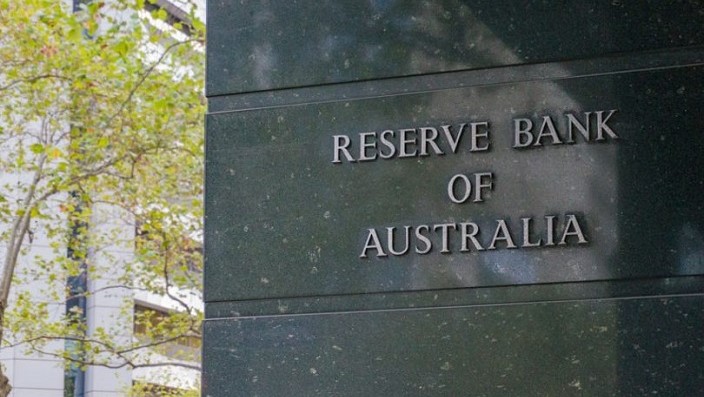 For quite a while now, the RBA Cash Rate has been the furthest thing from our minds.
For quite a while now, the RBA Cash Rate has been the furthest thing from our minds.
What with the pandemic, the election, war overseas – it was easy to see why the Cash Rate slipped out of the news cycle.
But, it’s precisely due to these things, as well as other factors that we’re now hearing about it more regularly as it continues to leap higher.
So why should we care?
What is the RBA Cash Rate, and what affects its movements?
And how does that impact you, as the owner of a loan or deposit product? Here’s how.
What is the RBA Cash Rate?
On the first Tuesday of each month, the Reserve Bank of Australia Board meets to determine what changes (if any) are needed to the official Cash Rate.
As the RBA website puts it:
The cash rate is the interest rate on unsecured overnight loans between banks. It is the (near) risk-free benchmark rate (RFR) for the Australian dollar and is also know by the acronym AONIA in financial markets.
Reserve Bank of Australia
Simple, right? Hmmm, maybe not.
In a nutshell, the cash rate represents the interest that banks and lenders have to pay on the money they borrow. I know what you’re thinking – Why would banks have to borrow money? Don’t they have all of our money? We’ll get into this later...
The RBA also defines the cash rate as the “overnight money market interest rate”. This is because banks frequently lend money to one another, and these transfers are processed overnight. The cash rate is the amount of interest banks need to pay in order to borrow money in these transactions.
For a long time now, the cash rate has been in decline (since November, 2011) or stable at a very low rate. In November of 2020 it fell to 0.1%, and stayed there until May 2022, when it rose by 25 basis points (%) to 0.35%. All signs point to more cash rate increases in the latter half of 2022, but don’t panic just yet – in January of 1990 the cash rate was sitting at a whopping 17.50%.
What Causes the Cash Rate to Change?
 So, we begin to understand what the cash rate is, but what exactly makes it shift up and down over time?
So, we begin to understand what the cash rate is, but what exactly makes it shift up and down over time?
Generally, when the RBA Board meets to determine the cash rate, the main three factors they take into account are inflation, employment levels and the growth of the Aussie economy.
It’s important to remember that the RBA is not a political body. It operates outside of politics, purely as a financial overseer, and its decisions are not influenced by whichever party has formed government.
Inflation
Inflation is the degree to which prices of items go up between two points in time. Usually, this is measured quarterly, and is an important indicator of economic performance.
The RBA likes to see inflation in the medium-term sit between a band of 2% - 3%. If inflation gets too high for their comfort, this may be seen as a reason to raise the cash rate.
The theory behind this is that doing so would allow everyday Australians to maintain their purchasing power against the rising price of goods.
If inflation falls below this 2% - 3% band, the RBA may decide to cut the cash rate or leave it stable.
Employment
Another key indicator of economic performance is the level of employment/unemployment among Australians.
The RBA might consider lowering the cash rate if the level of unemployment gets too high in their opinion. The reason they might do this is in an attempt to encourage investment and spending in the economy, which may drive job growth and creation, potentially bringing down the unemployment rate.
However, where employment is concerned, the RBA takes more things into account than the unemployment rate.
Despite the fact that unemployment may be low, the RBA may choose to keep the cash rate steady if wage growth is also low. This is because lower wage growth is often associated with poor economic performance and low levels of inflation.
Economic Performance
Economic performance, as it is measured by the RBA, is calculated as a percentage of Australia’s gross domestic product (GDP). GDP represents the total value of all goods and services produced domestically each year.
The RBA may decide to lower the cash rate if economic growth is becoming slower – using this as a way to try and stimulate the economy. We saw a recent example of this during the height of the COVID-19 pandemic, when, the RBA lowered the cash rate to its lowest point in history.
The theory behind doing this is that it may offer incentive for everyday Aussies and banks to spend and borrow money, in turn kick-starting economic growth.
How Does Cash Rate Affect Interest Rates?

Did you know that one third of Australians are financially illiterate?
However, this is not the only factor considered by banks and lenders when making pricing decisions.
As the RBA puts it – the three factors most banks take into account when setting interest rates are funding costs, competition from other banks and default risk.
Funding costs
Remember earlier, we said we’d get back to the idea of banks borrowing money from one another? Let’s get into it.
All banks have to conduct a delicate balancing act between lending and deposit products (everyday and savings accounts) in order to stay profitable.
Funding costs refer to the rate of interest banks pay when borrowing money to lend out to customers. It also refers to the rate of interest that banks have to pay customers who deposit money with them.
An increase in funding costs (and this is where the cash rate comes in) may trigger some banks to raise their interest rates in order to ensure ongoing profitability. Banks will also be keenly aware, though, that any increase to their interest rates may cause borrowers to be more cautious, potentially borrowing less.
Competition from other banks
The banking marketplace in Australia is fiercely competitive, and lenders know they are competing for your business in order to stay profitable.
This sort of competition also influences the movement of bank interest rates. In order to attract more borrowers and larger loan amounts, banks may reduce their lending interest rates, or alter their lending criteria, in order to provide fewer perceived impediments to potential customers.
The same is true for deposit customers – banks may increase their deposit rates if they are looking to grow this portfolio.
Risk of default
As you might have guessed, or maybe even have experienced, banks pay close attention to the risk associated with any prospective borrower.
By this, we mean the risk of an individual not being able to repay their loan or going into default.
Each bank has their own risk criteria, within which they are prepared to lend, but typically, the higher the risk of default a potential borrower comes with, the higher the interest rate they may have to pay.
How Does Increased Bank Interest Rates Affect Home Loan Borrowing?
Calculate your borrowing power
The cash rate is definitely something that banks keep a close eye on, when making decisions on how to price their own interest rates.
It’s not unreasonable to expect that when the cash rate is low, many banks and lenders will be able to offer lower than average interest rates to new home buyers and people looking to refinance.
It could also be said, however, that when the cash rate is on the rise, it’s not unreasonable to expect banks to pass on these rises to customers in the form of lending interest rate increases, so the banks themselves can remain profitable for the benefit of their customer base.
How Do Increased Interest Rates Affect Mortgage Repayments?
An overall increase in interest rates from banks can affect mortgage repayments in a number of ways.
Variable rate loans
If a customer has chosen a loan with a variable rate, this means that the interest rate is subject to change at any time. Therefore, a customer with a variable rate loan may be paying an example rate of 2.99% p.a. one month, and then be paying 3.24% p.a. the next month.
This increase in the variable rate will mean an increase in the customer’s minimum monthly repayment as well. Depending on your loan size, this may vary greatly, but in some cases it can be many hundreds of dollars that need to be found each month in order to continue to make repayments.
Reverting to variable after being fixed
Is your home loan fixed?
What we’ll be seeing soon is the completion of many borrower’s fixed terms, and as a result of recent increases in bank interest rates, these customers will revert to a variable rate which will be higher than the fixed rate they had previously been on.
Again, this will result in increased minimum monthly repayment amounts, meaning individuals and families will have to find ways to come up with extra money in order to continue making repayments.
All this is taking place in an environment where inflation and cost of living pressures are on the rise.
How can I Avoid Defaulting on my Mortgage?
 No-one intends to default on their mortgage – it’s probably every home owner’s nightmare come true.
No-one intends to default on their mortgage – it’s probably every home owner’s nightmare come true.
However, there are some things we can do to shield ourselves against the risk of home loan default.
Refinancing
If your home loan rate is putting strain on your budget, don’t forget to shop around. While, on the whole, bank lending interest rates are on the rise, it’s still a competitive market. Find a rate that will ease the pressure and a loan that offers features and flexibility to suit your needs.
Offset Accounts
If your home loan offers an offset account option, you should consider putting this to use. Remember, any savings you park in an offset account get subtracted from your total loan amount owing when your bank is calculating how much interest you have to repay.
Lowering LVR
By lowering your loan-to-value-ratio (LVR), we simply mean paying down more of your loan principal than your bank or lender requires. We often call it ‘getting ahead’ on your home loan. By doing this, you not only make extra funds available to you when needed (if your loan offers redraw), you essentially buy yourself time if your regular income stream is disrupted and you’d be otherwise unable to make regular loan repayments.
As we’ve seen, the cash rate of the RBA and its relationship with bank lending interest rates is not as clear cut as people sometimes make out.
This article is intended to provide general information of an educational nature only. This information has been prepared without taking into account your objectives, financial situation or needs. Therefore, before acting on this information, you should consider its appropriateness having regard to these matters and the product terms and conditions. Terms, conditions, fees, charges and credit criteria apply. Information in this article is current as at the date of publication.



